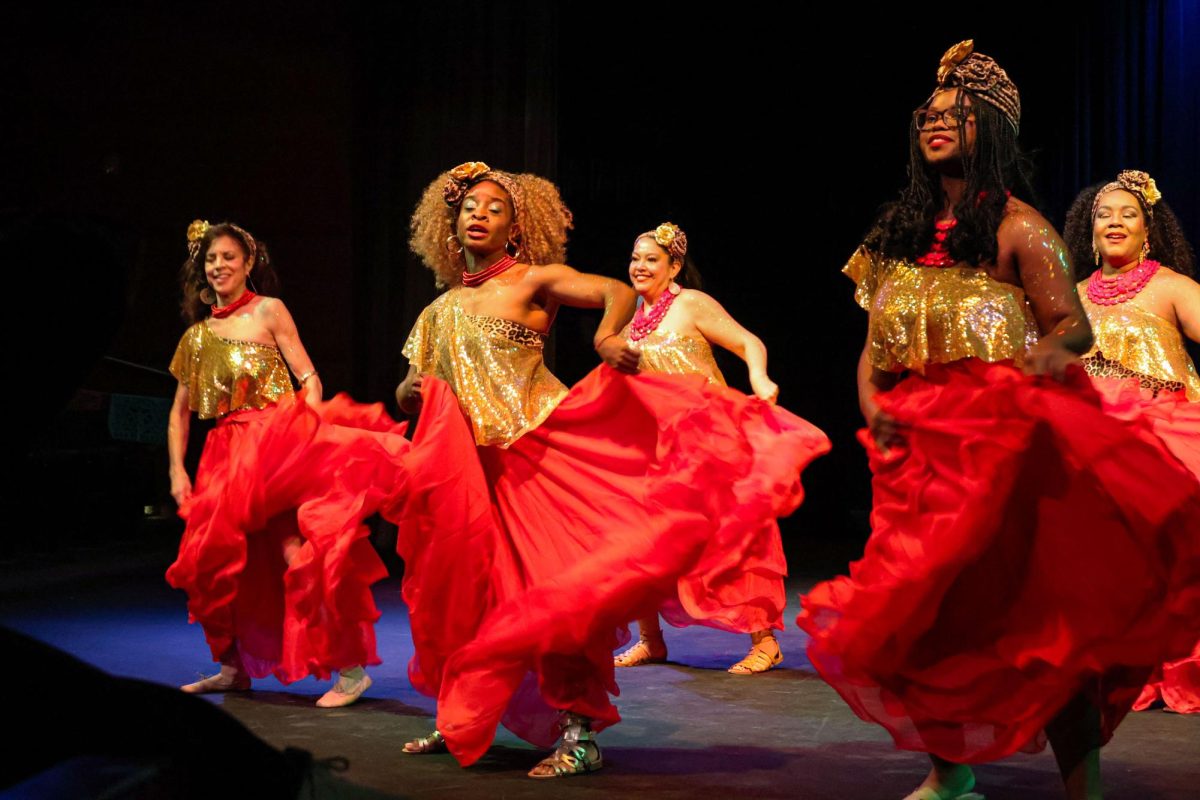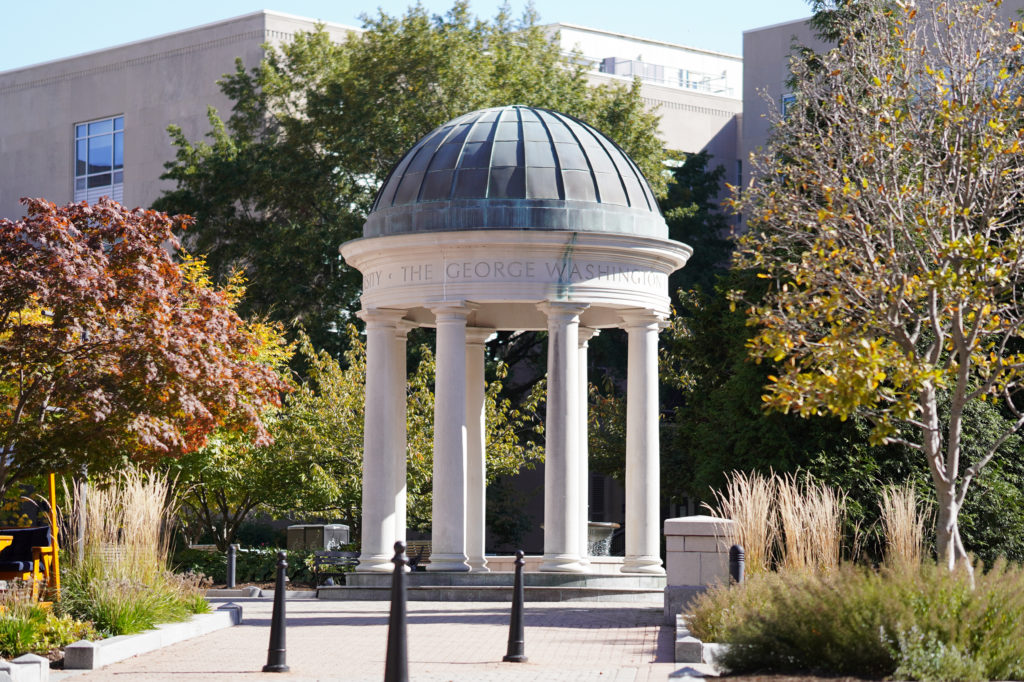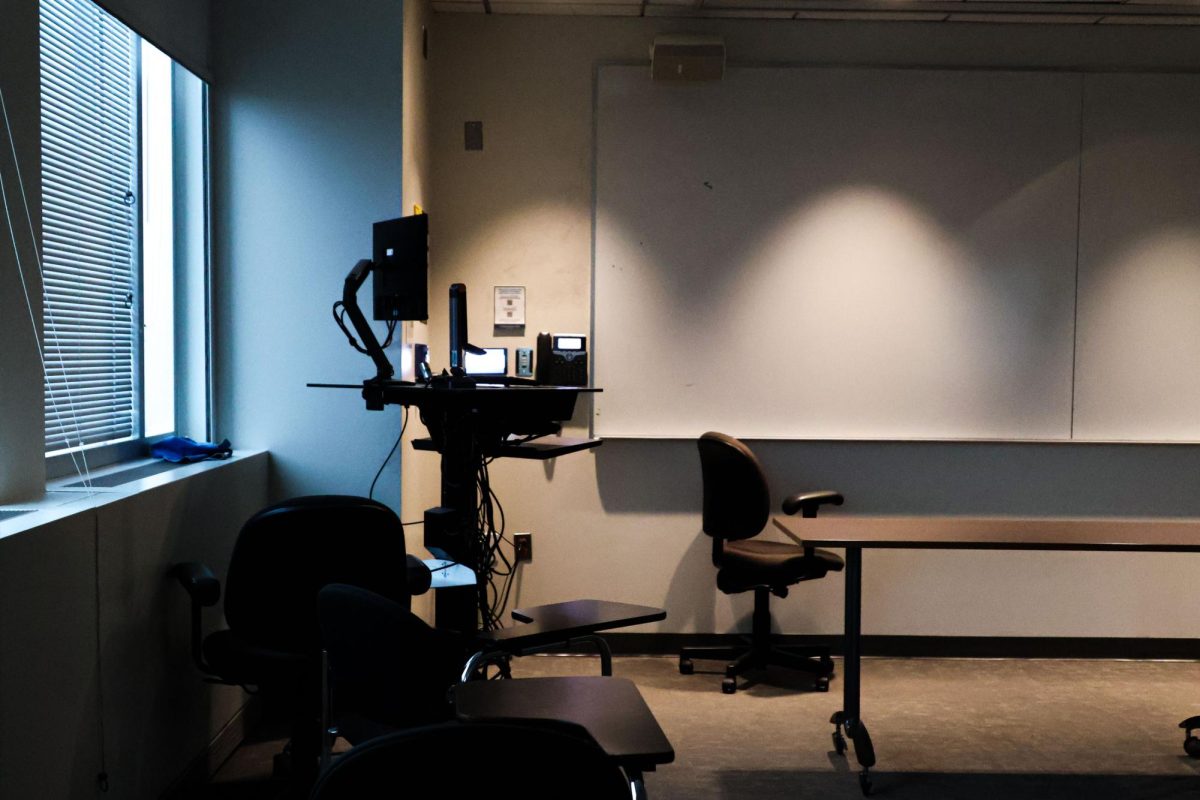Local and student organizations across the D.C. area participated in a dance showcase Sunday as part of the annual, monthlong celebration of Latin heritage.
GW Folklorico, a student organization that teaches students traditional dances from across Latin America, hosted the “¡RITMO!” showcase, which included performances from the GW Argentine Tango Club, GW Fuego, Vavá Samba and Ballet Folklorico Mexicano de Georgetown. Marko Sanchez, a sophomore and the media director for GW Folklorico, said ¡RITMO! marked the organization’s first time hosting a dance showcase on campus, and they hope on making it an annual event.
Attendees of the showcase in the Dorothy Marvin Betts Theatre were greeted with colorful papel picado banners hung alongside the stage and flags representing Latin American countries like Mexico and Argentina rested on seats as the smell of tres leches wafted outside the theater.
Sanchez said GW Folklorico was founded in 2019 by a group of Cisneros Scholars, a program that fosters leadership development in the Latino community, and has maintained its ties to the program with some members being a part of both organizations.
As performers awaited their time to take the stage and audience members trickled in, regional Mexican music like Por Mujeres Como Tu by Pepe Aguilar and Para Siempre by Vicente Fernandez set an energetic tone for the evening of dance performance.
The show began at 7 p.m. with GW Folklorico performing to “El Toro Mambo,” “El Toro de Once” and “El Sinaloense,” representing styles from the Colima and Sinaloa regions of Mexico as dancers wore traditional dresses with colorful long skirts.
GW Fuego, the University’s first Latin dance team, took the stage next wearing sequined red-and-black dresses and performed a routine channeling salsa and bachata styles, which included intricate partner work and turns.
Ballet Folklorico Mexicano de Georgetown, a traditional Mexican folkloric dance group at Georgetown University performed next to “La Negra” by Mariachi Vargas de Tecalitán and “El Relampago” by Lila Downs. The dancers used their skirts to create dramatic movements and shapes as the audience clapped along to the upbeat music.
Cheers spread across the theater as emcee Emely Bermudez invited the GW Argentine Tango Club to the stage. Two sets of partners performed the interpretative, passion-filled dance of tango, captivating an audience of about 50 people.
Vavá Samba, a local Brazilian dance troupe, was the last to perform before GW Folklorico returned to the stage for a final performance.
Following the performances, which concluded around 8:45 p.m., attendees were invited to enjoy tres leches, a traditional Latin American dessert made with milk-soaked sponge cake, catered by El Tamarindo, a restaurant based in Adams Morgan.
Fatima Rios-Nungaray, a senior studying political science and Spanish, said she grew up dancing Folklorico, a traditional Mexican dance, when she was in elementary school and “loves” seeing the dances and Mexican culture being showcased in D.C. throughout the event.
Rios-Nungaray said she appreciates how the layout of GW Folklorico’s performance allowed the audience to feel as though they are “traveling through” different parts of Mexico through dances representing the distinct stylistic elements of each region.
“D.C. is such a diverse community, and being that GW is in the center of the city, I think that it’s important that we reflect that diversity and that we celebrate each of our individualities because these uniqueness make us better, as a student body and as a university,” Rios-Nungaray said.
Malyna Trujillo, a sophomore and the co-president of GW Folklorico, said each region in Mexico has a different outfit and a different style of dance. In regions like Jalisco, a western Mexican state, Folklorico is known for its large dresses with colorful ribbons and fabric, while the Veracruz region along the Gulf of Mexico is known for dresses with lace overlay and red hairpieces. Trujillo, who has been dancing since she was five years old, said it “means a lot” to express her Mexican culture through dance, especially in a primarily white institution like GW where it is less represented.
“It’s important to talk about all the issues that our community faces and have those important discussions, but it’s also important for us to just celebrate that we make all these contributions, and we can celebrate our culture. I’m really excited that with our show, we can do that,” Trujillo said.
Trujillo said the organization performs at the “Posado: Camino a Belen” and “Plaza Hoya,” hosted by BFM Georgetown annually, and on campus like the Multicultural Student Services Center’s annual Block Party. She said the group also performed at the White House for the Hispanic Heritage reception last month after a White House representative emailed the group two days before the reception and invited them to perform.
“We were like, ‘Yes, absolutely,’” Trujillo said. “We got to take four of us to the White House, and we got to perform for congresspeople, celebrities and important people in Biden’s cabinet. It was awesome.”
Gloria Aguilar, a sophomore studying political science and criminal justice, said she joined GW Folklorico at the start of the semester having never danced in the Folklorico style before. She said the organization provided her with a way to connect and bond with the Latino community after moving to D.C. from California in 2023.
“I think these events are important because we’re in a PWI, and I think it’s a good space for diversity and feeling included, feeling like you belong to something in such a big university specifically,” Aguilar said.





